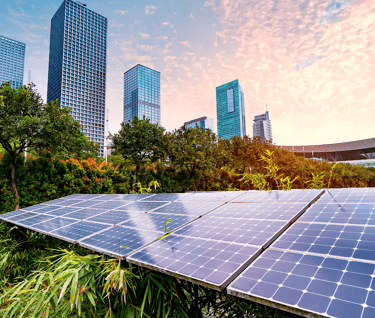Sustainability In Aviation: Best Practices And Innovations
Discover how the aviation industry is taking flight towards sustainability. Explore best practices and innovations reshaping aviation supply chains for a greener future.
Waqar Jadoon - CEO Vantage Plus
9/10/20233 min read


The Rise of Sustainability in Aviation Supply Chains: Best Practices and Innovations
Introduction
In a world where our planet's health is a pressing concern, industries are undergoing a profound shift towards sustainable practices. The aviation sector, with its undeniable impact on the environment, is embracing this change with a renewed focus on sustainability. We're witnessing the emergence of a greener, more environmentally responsible aviation industry, driven by a collective commitment to a better future. In this blog, we'll take a closer look at the remarkable strides being taken in the aviation supply chains, exploring both best practices and innovative solutions that are propelling the industry toward a more sustainable direction.
1. Fuel Efficiency and Alternative Fuels
Let's face it – fuel consumption has long been a thorn in the side of aviation's efforts to go green. However, the industry is no longer sitting idle. Ingenious minds are working tirelessly to enhance fuel efficiency, not just for economic reasons, but to reduce its ecological footprint. The engines of progress are humming, as aircraft manufacturers diligently engineer lightweight materials and sleek aerodynamic designs. These innovations translate into less fuel consumption and, consequently, fewer emissions. The drive doesn't stop here – the aviation realm is stepping into a new era with alternative fuels like biofuels. These sustainable alternatives promise a future where the skies are friendlier to our environment.
2. Electrification and Hybrid Technologies
A thrilling sense of change is palpable as the aviation sector begins to embrace electrification and hybrid technologies. Imagine the whisper of an aircraft's engine as it takes off, significantly quieter than before, all thanks to electric propulsion systems. These advancements aren't reserved for science fiction; they're becoming a reality for smaller aircraft and urban air mobility solutions. This isn't just about meeting regulations; it's about a genuine commitment to a cleaner future. Hybrid-electric systems are the talk of the town, promising reduced emissions and a greener tomorrow.
3. Sustainable Materials and Recycling
Picture an airplane wing made from sustainable materials that not only lighten the load but also tread lightly on the planet. This isn't a dream – it's an ongoing effort in the aviation industry. Designers and engineers are rethinking aircraft construction, opting for materials that are kinder to the environment. But it doesn't end there – the aviation community is fully invested in the concept of recycling. Aircraft aren't just marvels of engineering; they're potential repositories of valuable resources. By designing aircraft with recycling in mind, the industry is minimizing waste and ensuring that the end of an aircraft's life doesn't mean the end of its usefulness.
4. Efficient Route Planning and Air Traffic Management
Optimized route planning and air traffic management are vital for reducing fuel consumption and emissions. Advanced technologies, including real-time weather data, artificial intelligence, and predictive analytics, enable airlines to make informed decisions that result in shorter flight times, minimized delays, and reduced fuel usage.
5. Carbon Offsetting and Emissions Reduction
Airlines and aviation companies are taking responsibility for their emissions by investing in carbon offset programs. These initiatives support reforestation, renewable energy projects, and sustainable development, effectively balancing out the carbon emissions produced by flights.
6. Collaborative Partnerships
Collaboration is at the heart of sustainable aviation supply chains. Airlines, manufacturers, airports, and regulators are joining forces to drive sustainability initiatives forward. By sharing best practices, technologies, and research, the industry is fostering a culture of innovation and progress.
7. Technological Innovations and Research
Research and development are driving remarkable technological innovations in aviation sustainability. From solar-powered aircraft to innovative propulsion systems, the industry is continuously exploring new frontiers to reduce its environmental impact.
Conclusion
The rise of sustainability in aviation supply chains is a testament to the industry's commitment to a greener future. Through fuel efficiency improvements, electrification, sustainable materials, efficient route planning, carbon offsetting, and collaborative partnerships, aviation is making significant strides toward reducing its environmental footprint. As best practices and innovations continue to shape the industry, we can look forward to a more sustainable and eco-friendly aviation sector that soars to new heights while treading lightly on the planet.
Vantage Plus Analytics
Empowering businesses with AI-powered analytics and digital transformation solutions for data-driven success.
Services
Data Analytics
AI & Automation
Blockchain Solutions
Industry Analytics
